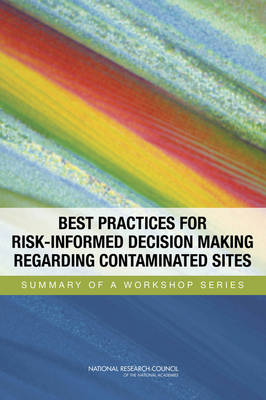
Best Practices for Risk-Informed Decision Making Regarding Contaminated Sites
National Academies Press (Verlag)
978-0-309-30305-7 (ISBN)
In Workshop #2, the report focuses on post-closure controls, assessment of long-term performance of site remedies, and best practices for risk-based remediation decisions.
1 Front Matter; 2 Introduction and Overview; 3 Volume I: Workshop 1 Summary; 4 1 Introduction; 5 2 Challenges to Regulatory Flexibility and Risk-Informed Decision Making; 6 3 Holistic Approaches to Remediation; 7 4 Incorporating Sustainability into Decision Making for Site Remediation; 8 References; 9 Volume II: Workshop 2 Summary; 10 1 Introduction and Background; 11 2 Using Risk to Inform Decisions; 12 3 Approaches to Assessment; 13 4 Monitoring; 14 5 Best Practices; 15 6 Summary of the Workshop Series Goals; 16 References; 17 Appendix A: Statement of Task; 18 Appendix B: Biographies of Planning Committee and Staff; 19 Appendix C: Workshop 1 Agenda; 20 Appendix D: Workshop 1 Speaker Biographies; 21 Appendix E: Workshop 2 Agenda; 22 Appendix F: Workshop 2 Speaker Biographies; 23 Appendix G: Participant List; 24 Appendix H: Acronyms
| Verlagsort | Washington |
|---|---|
| Sprache | englisch |
| Maße | 152 x 229 mm |
| Themenwelt | Naturwissenschaften ► Biologie ► Ökologie / Naturschutz |
| ISBN-10 | 0-309-30305-2 / 0309303052 |
| ISBN-13 | 978-0-309-30305-7 / 9780309303057 |
| Zustand | Neuware |
| Haben Sie eine Frage zum Produkt? |
aus dem Bereich


